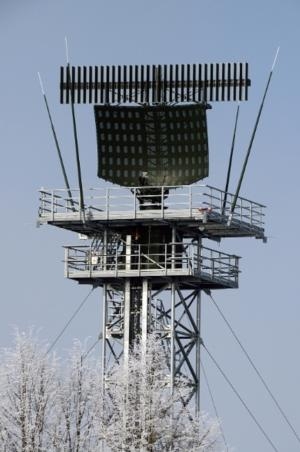Mon, Mar 16, 2015
Enhanced Detection Capabilities And Suppression Of Interference Signals On Its Next Generation Airport Surveillance Radar
Airbus Defense and Space has introduced new technologies in its latest air surveillance radar which give the ASR-NG (Airport Surveillance Radar Next Generation) advantageous air traffic control capabilities. The company has completed a demonstration in real scenarios in front of international customers which was testament to enhanced detection capabilities with a significant increase of detection range coverage to 120 NM. Other key features of ASR-NG are the complete mitigation of wind farm effects, a new Primary Surveillance Radar 3D height measurement and resistance against interference by 4G/LTE mobile phone signals.

“ASR-NG offers an extraordinary performance proven in an extensive test phase,” said Thomas Müller, head of Airbus Defense and Space’s Electronics business line. “With its new capabilities it addresses the most urgent and recent concerns of air surveillance and air traffic control customers.”
ASR-NG consists of a primary radar on the basis of a solid state transmitter and advanced signal processing technology for long-range surveillance. Its extreme sensitivity means that even very small objects such as mini drones, slow flying objects such as helicopters or even flocks of birds can be reliably detected and classified. Specifically developed algorithms allow for safe guidance of aircraft even in the vicinity of wind turbines, which is hardly possible with conventional air traffic control radar systems.
This extraordinary primary surveillance radar capability is combined with the MSSR 2000I (MSSR = Monopulse Secondary Surveillance Radar) secondary radar for automatic identification of individual aircraft. It meets the new air traffic control standards “Mode S” and “ADS-B”, which greatly improve aircraft identification queries and are currently being introduced in European airspace.
Airbus Defense and Space supplies air traffic control and identification systems in the military and civilian sector. Amongst others, the company equips the German Armed Forces’ airports with the ASR-S (Airport Surveillance Radar, S-Band) airport surveillance radar and delivers a complete approach control system for the military airfields in Switzerland. In addition, the MSSR 2000I secondary radar is deployed by the naval forces of Germany, France, Norway and Finland for military friend-or-foe identification. For civil and military air traffic control, those identification systems are used in countries such as Germany, France, USA, UK, Canada, Austria, Portugal, Bulgaria and the Philippines.
(Image provided by Airbus)
More News
From 2023 (YouTube Version): Legacy of a Titan Robert (Bob) Anderson Hoover was a fighter pilot, test pilot, flight instructor, and air show superstar. More so, Bob Hoover was an i>[...]
Get The Latest in Aviation News NOW on Instagram Are you on Instagram yet? It's been around for a few years, quietly picking up traction mostly thanks to everybody's new obsession >[...]
Aero Linx: B-52H Stratofortress The B-52H Stratofortress is a long-range, heavy bomber that can perform a variety of missions. The bomber is capable of flying at high subsonic spee>[...]
Altimeter Setting The barometric pressure reading used to adjust a pressure altimeter for variations in existing atmospheric pressure or to the standard altimeter setting (29.92).>[...]
"Knowing that we play an active part in bettering people's lives is extremely rewarding. My team and I are very thankful for the opportunity to be here and to help in any way we ca>[...]
 Classic Aero-TV: Remembering Bob Hoover
Classic Aero-TV: Remembering Bob Hoover ANN FAQ: Follow Us On Instagram!
ANN FAQ: Follow Us On Instagram! ANN's Daily Aero-Linx (05.15.24)
ANN's Daily Aero-Linx (05.15.24) ANN's Daily Aero-Term (05.15.24):Altimeter Setting
ANN's Daily Aero-Term (05.15.24):Altimeter Setting Aero-News: Quote of the Day (05.16.24)
Aero-News: Quote of the Day (05.16.24)



